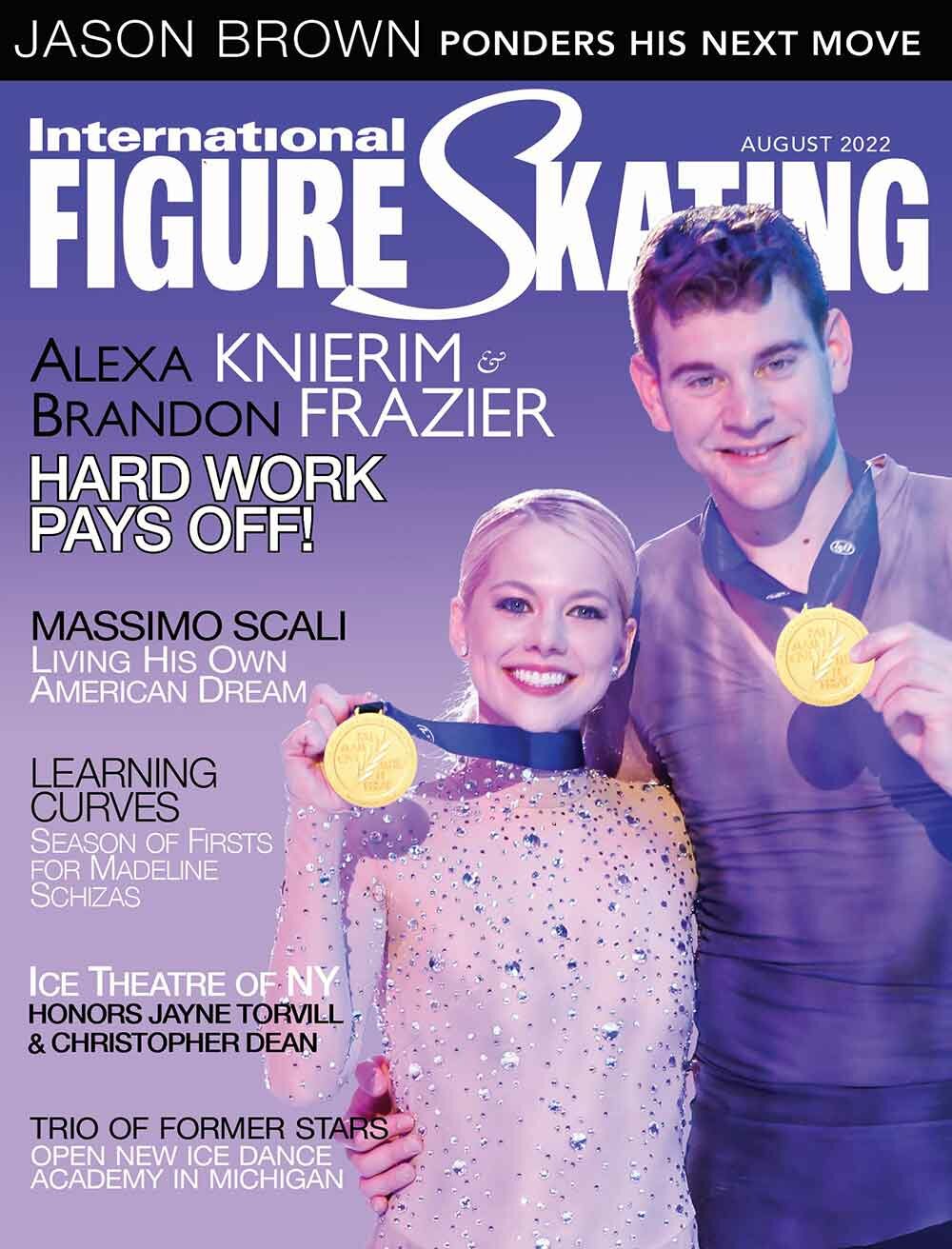
 ©IFS August 2016 – Reposting and/or translation of this article in any format is strictly prohibited.
©IFS August 2016 – Reposting and/or translation of this article in any format is strictly prohibited.
After a comeback year that was full of highs and lows, everything finally came together for Japanese superstar Mao Asada at her final competition.
It had been a tough season, but Mao Asada soldiered on. She had high hopes for a good result at the World Championships, but things did not get off to a stellar start. The short program had its share of technical issues, which left her in a distant ninth heading into the free skate. It was not the opening for which she and her legions of global fans had hoped.
Asada turned it around two days later in the free, delivering the best performance of her “Madame Butterfly” routine of the season. The audience rose to its feet as the final note of her music faded and the look of satisfaction and relief on Asada’s face at that moment was unmistakable.
Although her overall placement of seventh was her lowest to date at a World Championships, Asada was nonetheless pleased. For her, it confirmed that she had made the right decision to return to the competitive ranks.
“Even though I wasn’t at my best at my final competition of my comeback season, I personally believe I skated as well as I could,” she said. “The audience gave me a standing ovation and it felt great. I had the feeling in the free that I had done what I came to do. Throughout the season I discovered the things I need to work on and I think this is the start for me.”
There had been moments earlier in the season where the Japanese star had questioned the wisdom of returning. A poor outing at NHK in Nagano was followed by an even lower moment at the Grand Prix Final in December, where she finished sixth and dead last.
“At the Final, I wasn’t able to perform the way I wanted and I could really sense that the level of competition had gotten so high,” said Asada of the three teenagers that claimed the podium. “I wondered if I would be able to compete at that level, but then I remembered that it was my decision to come back.”
Instead of breaking her spirit, the disappointment of her experience in Spain reaffirmed her motivation and caused Asada to be more philosophical about her decision. “Mentally and physically things didn’t go according to plan, but you just have to get through those days knowing that sometimes these things happen,” the 25-year-old said.
Less than two weeks later, Asada headed to Japanese nationals. Again, she struggled in the short, placing fifth. Despite two mistakes at the beginning of her long program, she realized midway through her performance that if she just let go of her inhibitions she had the ability to skate well. That thought process paid off. Asada captured the bronze medal in Sapporo.
“While I was skating, I was thinking how much your mental state is such a big part of sport,” Asada explained. “Physically, I felt good and I thought how great it would be to have that feeling always. I then understood that there was really nothing I had to lose. All I thought about after that was seeing how far I could push myself beyond my own limits.”
Asada was initially assigned to Four Continents and Worlds, but on Jan. 15 she announced that she would not compete in Taiwan. The doubts she had carried into the two events in December about whether to continue competing, were gone. Now, all she wanted to do was focus completely on the World Championships.
“I wasn’t thinking about coming back in that way before I went to Boston,” she said. “In the run-up to Japanese nationals, I really struggled with whether I should continue or not, even though I had already gone through that process before deciding to make my comeback. When I look back now, I wonder why I worried so much.”
Asada said she learned from the difficulties she encountered earlier in the season, and that has given her a different perspective with respect to the areas of her skating that she needs to improve. “I now have a clear idea of what I need to work on and I’m feeling really positive.”
While she would dearly love to compete at the 2018 Winter Olympic Games in South Korea, Asada is taking things step by step at this time. “It would be really great to go to PyeongChang, but right now I’m just focusing on one year at a time and trying to get myself to the level at which I need to be skating,” the nine-time national champion said.
Asada made her Worlds debut in 2007, and in Boston she tied the record of nine appearances by a Japanese lady at the global event, which was set by Fumie Suguri in 2009. If she makes the 2017 World Championships team, she will be write a little piece of history. That statistic came as news to Asada.
“Really? It doesn’t feel like I’ve been competing such a long time and to hear that is a surprise for me,” she said. “But really, it is all a result of doing what I can and need to do each year, and I am happy that this has enabled me to participate so many times. It would be really satisfying if I can skate well next year and get a good result.”
OLYMPIC FOCUS
Asada celebrated her 10th year in the senior ranks last season. As a precocious 15-year-old, she kick-started this era of her career by winning the 2005-2006 Grand Prix Final in her debut. Because her birthday fell a few months after the deadline of July 1, 2005, she was ineligible to compete at the 2006 Winter Olympic Games in Torino, Italy.
Despite the uproar from fans around the world, Asada was unfazed because she knew, even then, that she would have a long career in the sport. “When I was young, I always said that I wanted to skate all over the world,” she said with a smile. “I thought that I would still be skating when I was 25. I didn’t know if I would be still competing, but I always knew that I would be involved in skating in some way.”
As with most elite athletes, Asada had dreamed of winning an Olympic title since childhood, but her hopes of standing on the top step of the podium have been dashed thus far. She claimed the silver medal in 2010, but a disappointing outing in 2014 left her in sixth place.
She said that striving to reach that goal has been the motivation to keep skating all these years. “When I was younger my dream was to win a gold medal at the Olympics. It’s a fact that my dream of a gold medal didn’t come true, but that was my dream as a child. I have been able to compete at the Olympics and I believe because I had that dream I was able to keep going.”
Asada said a lot of thought went into her programs for the 2014 season, right down to what the color of her costume should be. The four previous Olympic champions had all worn blue for their free routines, and many in the skating world perceived it as being a lucky color.
“I had heard the stories and, before I knew it, my choreographer Tatiana (Tarasova) had already decided to go with blue,” Asada recalled. “She decided on the color of my costume before I consulted with her about my program. She also designed it for me. The thought that she put into that decision for me was important.”
In Vancouver and Sochi, she skated to dramatic pieces by Russian composer Sergei Rachmaninoff. For the 2018 Olympic season, Asada said that she would choose the music herself. “I think it will be deeply emotional as it will be a very special competition for me if I am selected. I am going to put a lot of thought into what music I will use.”
While her dream of winning Olympic gold has not yet come to fruition and last season did not go according to plan, Asada has fulfilled one lifetime ambition. “I always wanted to skate to ‘Madame Butterfly’ and now I have been able to do that,” she said.
ICONIC PROFILE
Though her international results last season were not what she had hoped for, it has not affected her popularity in Japan. Asada remains one of the most high profile athletes in that country, and is in high demand for television appearances and magazine photo shoots. Likewise, major corporations have not shied away from inking endorsement deals with the Japanese icon, all of which is a testament to her exalted stature in her homeland.
Following Worlds, Asada joined the Japanese leg of the Stars on Ice tour as a guest skater. She then headed to Switzerland to perform in the “Ice Legends” show in Geneva, where she joined another veteran, Carolina Kostner, who also has a comeback in the pipeline for next season.
Having another skater of her era returning to the competitive ranks is something that Asada wholeheartedly welcomes. “I think Carolina is about three or four years older than I am, so that is really inspiring because right now I am one of the oldest,” Asada said. “To come back and be in such great shape as she is physically is really amazing.
“Skating is a sport where the competitors today tend to be young and there are few skaters the same age as me still skating. So Carolina coming back makes me really happy. It’s very inspirational.”
Asada once again went to Canada to work on new programs for the upcoming season with her longtime choreographer Lori Nichol.
Her two Grand Prix events are Skate America and Trophée de France. She is heading into them with the goal of qualifying for the Final for the ninth time in her career. And at Japanese nationals later this year, she will attempt to make the World team for that record 10th time.
Asada is under no illusions about the stiff competition she will face in her upcoming quest, but with nothing left to prove she said it is all about skating for herself. “Every year there are young skaters coming through and it’s tough to compete against them. However, everyone has their own struggles during their skating careers, so I am just going to take things at my own pace and try and reach my own goals.”
RELATED CONTENT:
RISE OF THE JAPANESE POWERHOUSE




